Adolph I of Cleves (2 August 1373 – 23 September 1448) was the
second Count of Cleves and
the fourth Count of Mark.
He was the son of Adolph III, Count
of Mark, and Margaret of Jülich (and
thus the brother of Margaret of Cleves).

Marie of Burgundy, Duchess of Cleves (1393 – 30 October 1466) was
the second child of John the Fearless and Margaret of Bavaria,[1] and an elder sister of Philip the Good.[2] Born in Dijon,
she became the second wife of Adolph, Count of
Mark in May 1406.[3] He was made the 1st Duke of Cleves in 1417. They were the
grandparents of King Louis XII of France and
the great-grandparents of John III, Duke of
Cleves, father of Anne of Cleves, who was fourth Queen consort
of Henry VIII of England.
By their daughter, Catherine,
they were ancestors of Mary, Queen of Scots.
The Duke and Duchess of Cleves lived at Wijnendale Castle in West Flanders. She died in Cleves in present-day Monterberg,Kalkar.
|
Carlos VI de Francia (París, 3 de diciembre de 1368 – 21 de
octubre de 1422), conocido como Carlos
el Bien Amado o Carlos el Loco, era hijo de Carlos V y de Juana de Borbón

Isabel de Baviera (1370–1435) fue reina consorte de Francia después de
casarse el 17
de julio de 1385 con Carlos VI de Francia. Durante la Guerra de los Cien Años, desempeñó un importante
papel en la guerra civil entre los borgoñones y
los Armagnacs.
Isabel de Baviera era hija del
duque Esteban III de Baviera y Tadea Visconti, hija
del Duque
de Milán, Bernabé
Visconti.

Ricardo de
Conisburgh Nació en el castillo de Conisburgh -de donde
le proviene el sobrenombre-, en el mes de septiembre de 1376, siendo el
segundo hijo varón de Edmundo de Langley, duque de York, y de Isabel
de Castilla.
Ana Mortimer (27 de diciembre de 1390 - † septiembre de 1411) era la hija
de Roger IV de Mortimer, cuarto Señor de March y Elanor de
Holland. Sus abuelos paternos eran Edmundo Mortimer, tercer Señor de March, y Filipa Plantagenet, mientras que sus
abuelos maternos eran Ricardo FitzAlan y Elanor de Lancaster. Su abuela paterna
era a su vez hija de Lionel de Antwerp, quien a su vez lo
era de Eduardo III de Inglaterra. Esto le daba a Ana
derechos al trono de Inglaterra. Fue por su intermedio que laCasa de York reclamó los
derechos al trono que llevaron a la Guerra de las Rosas. Pese a lo
anterior, lo que se sabe de su vida es muy poco.
Ana Mortimer (27 de diciembre de 1390 - † septiembre de 1411) era la hija
de Roger IV de Mortimer, cuarto Señor de March y Elanor de
Holland. Sus abuelos paternos eran Edmundo Mortimer, tercer Señor de March, y Filipa Plantagenet, mientras que sus
abuelos maternos eran Ricardo FitzAlan y Elanor de Lancaster. Su abuela paterna
era a su vez hija de Lionel de Antwerp, quien a su vez lo
era de Eduardo III de Inglaterra. Esto le daba a Ana
derechos al trono de Inglaterra. Fue por su intermedio que laCasa de York reclamó los
derechos al trono que llevaron a la Guerra de las Rosas. Pese a lo
anterior, lo que se sabe de su vida es muy poco.
Raúl Neville, 1° Conde de Westmorland, y de Juana
Beaufort. Juan de Gante, I duque de Lancaster y Catalina de Roet-Swynford. Juan de Gante fue
el tercer hijo de Eduardo III de Inglaterra y su
esposa Felipa de Henao.
Richard
Wydeville, Esq., Sheriff of Kent, Constable of the Tower 1385-1441 Sir John de
Wydeville, Sheriff of Northants y Isabel
Goddard
Peter of Luxembourg (1390 – 31 August 1433) was a son of John of Luxembourg, Lord of Beauvoir, and his wife Marguerite of Enghien.
Margaret of Baux (French: Marguerite des Baux, Italian: Margherita del Balzo; 1394 – 15 November 1469) was a Countess of
Saint-Pol, of Brienne, and of Conversano. She was a member of the noble House of Baux of
the Kingdom
of Naples, which had its origins in Provence dating
back to the 11th century. Her husband was Peter of Luxembourg, Count of Saint-Pol,
of Brienne, and ofConversano (1390
– 31 August 1433). Margaret's descendants include English Queen Consort Elizabeth Woodville, King Henry
IV of France, Mary, Queen of Scots, and all English monarchs
after 1509.
Margaret was born in
1394, the daughter of Francis of Baux (1330
– 23 April 1422) by his third wife Sveva Orsini (1360 – c.1430),[1]a descendant
of Simon de Montfort, 6th Earl of Leicester and Eleanor of England (daughter of King John of England).[2]
Her paternal
grandparents were Bertrand III of Baux, Count of Andria
and Squillace, and
Marguerite d'Aulnay, and her maternal grandparents were Nicola Orsini, Count
of Nola, Senator
of Rome (27
August 1331 – 14 February 1399), and Jeanne de Sabran.
|
Robert of Bar (1390
– Agincourt, 25 October 1415) was Lord of Marle
between 1397 and 1413, Count of Marle between 1413 and 1415 and Count of Soissons between 1412 and 1415.
He was the only child of Henry of Bar and Marie
I de Coucy, Countess of Soissons.
Jeanne de Béthune, Viscountess
of Meaux, Countess of Ligny (c.1397- late 1450), was a French noblewoman,
the suo jureViscountess of Meaux, having inherited
the title upon her father's death in 1408. Her father was Robert VIII de
Béthune, Viscount of Meaux. Jeanne married twice; firstly to Robert
of Bar, and secondly John
II of Luxembourg, Count of Ligny who held Joan of Arcprisoner following her capture by
the Burgundians in May 1430. Jeanne was one of the three women who cared for
Joan during her imprisonment.[1]
Jeanne was born in about 1397,
the eldest daughter of Robert VIII de Béthune, Viscount of Meaux,
and his third wife Isabelle de Ghistelles
John Stewart of Innermeath, Lord of Lorn 1350-1421 Sir Robert Stewart of Innermeath, Knight yIsabella Margaret, Countess of Fife and
Angus, Heiress of Hokettle
Isabel of Argyll Stewart (MacDougall de Ergadia)
q1362-1439 Ewen MacDougall, 5th of Lorn and 7th of
Dunollie yJonet Isaac
Juan
Beaufort, conde de Somerset
John Beaufort, 1st Earl of Somerset

Margaret
Holland
Henry
Sinclair, 2. conde de Orkney
Henry Sinclair, 2nd earl of Orkney
Egyda
Douglas
William
Douglas, 2nd Earl of Angus (24 February 1398 – October 1437) was
a Scottish nobleman
and soldier. The son ofGeorge
Douglas, 1st Earl of Angus and Princess Mary of Scotland, he
was a grandson of King Robert III.
The
story of Angus' life is interwoven with that of his uncle and King, James I of Scotland.
Margaret
Hay, daughter of Sir William Hay of Yester.
Sir
Thomas Boyd of Kilmarnock was a 14th-century Scottish landowner
and lord of Kilmarnock in Ayrshire. He was the son of Sir Robert Boyd, who fought at the Battle of Bannockburn.
In 1346, he was taken prisoner at the battle of
Neville's Cross. He is known for building the earliest parts
of Dean Castle in around 1350, and the
castle still stands today and is open to the public. Sir Thomas was succeeded
by his son, Thomas (died 1432). Sir Thomas' later descendants were the Earls of Kilmarnock.
Sir Robert Maxwell of Calderwood
1373-1423 Sir John Maxwell, 4th of Pollok y Elizabeth Lindsay of Crawford
Elizabeth Denniston 1377-1430 Sir Robert Danyelston y Margaret de Montfichet
Thomas II de Saluces (1304- Saluces le 15 août 1357,
inhumé à Revello). marquis de Saluces de 1336 à 1357.
Thomas II de Saluces est le fils de Frédéric Ier de
Saluces et de sa première Marguerite de la Tour du Pin fille de Humbert Ierde
Viennois
Richarde (qui teste en 1361)
fille de Galés Ier Visconti
Hugo de Genève, lord of Anthon, de Varey et de Gex
Hugo de Genève, seigneur d'
Anthon, de Varey et de Gex
Ancestry:
Isabelle d`Anthon 1265-1325 Guichard II, baron d'Anthon y Leonette de Thoire et Villars
.
|
Teodoro I
Paleólogo (Constantinopla, 1270 - Trino, 24 de abril de 1338)
fue marqués de
Montferrato desde 1306 hasta
su muerte.
Era un hijo del emperador Andrónico II
Paleólogo y Yolanda
de Montferrato y por lo tanto hermanastro del también
emperador Miguel IX Paleólogo quien
sucedió a su padre en el trono. Después de que la línea masculina de los Aleramici, marqueses de Montferrato, se
extinguiera en 1305, heredó Montferrato, ya que su madre era
hermana de Juan, el
último marqués de la familia Aleramici. Desembarcó en Génova en 1306, ganando poco a poco el
territorio de Montferrato sostenido por Manfredo IV de
Saluzzo, la familia Acaja y
el rey Carlos II de
Anjou. En1310 recibió la investidura imperial por
el emperador Enrique
VII.
Argentina
Spinola, hija del dux de esa república, Opicino
Spinola.
Jaime III de Mallorca, conocido como el Temerario (Catania, Sicilia, 1315 - Lluchmayor, Mallorca, 1349). Rey de Mallorca,Conde de Rosellón y de la Cerdaña y Señor de Montpellier (1324-1349).
Hijo del Infante Fernando de Mallorca —a
su vez hijo de Jaime II— y
de Isabel de Sabran,
Condesa de Matagrifó.

Constanza de Aragón y de Entenza (1318 - Montpellier 1346),
infanta de Aragón y reina
consorte de Mallorca (1325-1346),
por su matrimonio con Jaime III de Mallorca.
Hija de Alfonso IV el Benigno,
rey de Aragón.
Hija de Alfonso IV el Benigno, rey de Aragón, y de
su primera esposa Teresa de Entenza. Fue hermana de Pedro IV el Ceremonioso, rey de Aragón, y del
conde Jaime I de Urgel, entre otros.
Aimón de
Saboya (en francés: Aymon de Savoie)?; en italiano Aimone di
Savoia (Chambéry 15 de diciembre de 1291 -
† Montmélian 22 de junio de 1343),
llamado el Pacífico, Conde de Saboya (1329-1343).
Su padre era Amadeo V de Saboy
John II, the Hunchback,[1] (born 1333, died May 26,
1384), Count of Armagnac, of
Fézensac, Rodez (1371–1384) and Count of Charolais (1364–1384),
Viscount Lomagne and Auvillars, he was the son of John I, Count of
Armagnac, of Fezensac and Rodez, Viscount Lomagne and Auvillars and
Beatrix de Clermont, great-granddaughter of Louis IX of France.
jeanne de
Périgord, daughter of Roger Bernard, Count of Périgord, and Eleanor de Vendôme
Carlos II de
Navarra (Évreux, 10 de octubre de 1332 – Pamplona, 1 de enero de 1387)1 conocido también como Carlos
II de Évreux o Carlos el Malo - le Mauvais -
fue conde
de Évreux - desde el 23 de septiembre de 1343 hasta 1378,
momento en que el condado le es incautado por parte de Carlos V -
y rey de Navarra -
desde el 6 de octubre de 1349 hasta
su muerte.
Nacido del
matrimonio entre Felipe III y Juana II,
era por vía materna nieto del rey de Francia, Luis X el Obstinado (1314-6).
John I (February 1346 – 23 September
1390) was the duke of Lorraine from
1346 to his death. As an infant of six months, he succeeded his father, Rudolph,
who was killed in the Battle of Crécy.
His mother was Mary, daughter of Guy I of Blois.

Sophie
(1343–1369), daughter of Eberhard
II, Count of Württemberg,
Henry
V of Vaudémont (1327 - 1365) son of Anseau
Joinville, Sire de Joinville (1265 -1343), and Marguerite
of Vaudémont (1305 -1333), herself daughter of Henry III of
Vaudémont: married to Marie de Luxembourg, daughter of John of Luxembourg,
Count of Ligny, and Alix de Dampierre
John VI of
Harcourt (or John
of Vaudémont) (1 December 1342 – 28 February 1389) was a count of Harcourt. He was son of John
V of Harcourt and Blanche
of Ponthieu who was the sister of Jeanne of Ponthieu.
Catherine
(1342–1427), daughter of Peter I, Duke of
Bourbon.
Peter II of
Alençon,
called the Noble (1340 – 20 September 1404, Argentan), was the son of Charles II of Alençon and Maria de la Cerda. He was Count of Alençon from
1361 until his death in 1404 and Count of Perche from 1377 until his death
in 1404.
Marie Chamaillart, Viscountess of Beaumont-au-Maine. Guillaume
Chamaillart, Viscount of Beaumont-Brienne, Sire d'Anthenaise, and Marie de
Beaumont, Dame de Beaumont-le-Vicomte.
Marie of
Blois (1345-1404)
was a daughter of Joanna, Duchess
of Brittany and Charles, Duke of
Brittany

John I (27 December 1350 – 19 May 1396), called by
posterity the Hunter (Juan el Cazador in Castilian, Chuan
lo Cazataire inAragonese and Joan
el Caçador in Catalan) or the Lover of Elegance (el
Amador de la Gentileza in Castilian and l'Amador de la
Gentilesa in Catalan), but the Abandoned (el
Descurat) in his lifetime, was the King of Aragon from 1388 until his death.
John was the eldest son of Peter IV and
his third wife, Eleanor, who
was the daughter of Peter II of Sicily.

Violant of Bar (c. 1365 – 3 July 1431) was queen consort of
Aragon.
She was the daughter of Robert I, Duke of Bar and Marie of Valois.

Federico II del Vasto (1332 – 1396)
fu marchese di Saluzzo,
figlio del marchese Tommaso II di Saluzzo e
di Ricciarda Visconti (†1366).
Beatrice di Ginevra (1335 - 1392), figlia di Ugo di Ginevra, signore
di Anthon, di Varey e di Gex, e di Isabella d'Anthon (1307 - 1335
Hugues II de Pierrepont, comte
de Roucy 1350-95 Simon de
Roucyn, Comte de Roucy et de Braine y Marie de
Châtillon-Rozoy
Blanche de Coucy, dame de
Montmirail 1370-1437 Raoul de Coucy,
seigneur de Montmirail y Jeanne
d'Harcourt, dame de Montmirail
Rodrigo de Borja was a Spanish
noble from Xàtiva of the prestigious House of Borja,
Kingdom of Valencia in the town of Borja, Zaragoza. He was head of house for
this branch of the Borja family based on Ventres street in Játiva, the same
branch which would later go on to become the infamous Borgia family
in Italy.[1]
Rodrigo de Borja was born in 1349
in Játiva, Comunidad
Valenciana. He was the son of Gonzalo Gil de Borja who
served as Jurado del Estamento Militar de
Játiva in 1340, and his wife whose name is not known. His
paternal grandfather was Gil de Borja, also of Jativa and head of the House of Borja residing
on Ventres street. His paternal great grandfather, Rodrigo de Borja,
the presumed founder of their branch of House Borja, participated in the Conquest of Orihuela in 1272.[2] Rodrigo's great
grandson would go on to become Pope Alexander VI.
Galeazzo II Visconti (Milán, aprox. 1320 - Pavía, 4 de agosto de 1378) fue señor de Pavía, Como, Novara, Vercelli, Asti, Alba,Tortona, Alessandria y Vigevano, y señor de Milán (1349 - 1378) con sus hermanos Mateo II y Bernabé.
Fue el hijo de Stefano
Visconti y Valentina Doria.

Bianca de Saboya, hija del
conde Aimone
de Saboya
ohn of Montfort (in Breton Yann
Moñforzh, in French Jean de Montfort) (1295 – 16 September 1345[citation needed], Château d'Hennebont),
sometimes known as John IV, Duke of Brittany,[a] and 6th Earl of Richmond from
1341 to his death. He was the son of Arthur II, Duke of Brittany and his second
wife, Yolande de Dreux.

Joanna of Flanders (c. 1295 –
September 1374) was Duchess of Brittany by her marriage to John of Montfort.
Much of her life was taken up in defence of the rights of her husband and,
later, son to the dukedom, which was challenged by the House of Blois during
the War of the Breton Succession. Known for her fiery
personality, Joanna led the Montfortist cause after her husband had been
captured, and began the fight-back, showing considerable skill as a military
leader.
Shortly after taking refuge in England,
she was confined to Tickhill Castle by order of King Edward III.
Joanna was highly praised by the
chronicler Jean
Froissart for her courage and energy. Because of her feats of
leadership, David
Hume described her as "the most extraordinary woman of the
age".
Joanna was the daughter of Louis I, Count of Nevers and Joan, Countess of Rethel, and the sister of Louis I, Count of Flanders

Isabel de Castellbó fue condesa de Foix, vizcondesa de Castellbó, y vizcondesa de Bearne, entre otros títulos (véase los títulos en su antecesor). Sucedió a su hermano Mateo I, fallecido en agosto de 1398 sin sucesión.
Estaba casada desde 1384 con Arquimbaldo I de Grailly. Roger-Bernard II de Foix, Vicomte de Moncade y Giraude de Navailles
Carlos I de Albret (? - 25 de octubre de 1415), condestable de Francia (1402-11 y 1413-15) y uno de los comandantes conjuntos que dirigieron al ejército de su país en la trágica batalla de Agincourt.
Aunque de familia noble (era hijo de Arnaud, Señor de Albret),
Louis de Brosse, señor de Sainte-Sévère
Louis de Brosse, seigneur de Sainte-Sévère
Constance de La Tour d' Auvergne
Guillaume le Preux de Naillac
(Guillaume de Naillac)
vicomte de Bridiers, chambellan du Roi, sénéchal de Saintonges
- Né vers 1328
- Décédé en décembre 1406 , à l’âge de peut-être 78 ans
Parents
- Perrichon de Naillac, seigneur de Naillac ca 1300-1372
- Olive de Saint-Georges ca 1310-
Sosa : 1 572 947
dame de Mondon, de Vaux, du Moutier, de Porret et d'Ardonce
(Bertrand DE LA TOUR D'AUVERGNE)
dame de Mondon, de Vaux, du Moutier, de Porret et d'Ardonce
- Née vers 1370
- Décédée après 1406
Parents
- Guy V Turpin de Crissé, seigneur de Crissé 1330/-1397
- Marie de Rochefort, dame de Vihiers ca 1335-
Jean I de Châtillon, conde Penthièvre
Jean I de Châtillon, comte de Penthièvre
- Charles de Châtillon, conde Penthievre y de Goelo vizconde de Limoges * 1319
- Jeanne de Bretagne, condesa de Penthièvre * 1319
Savary V de Vivonne, señor de Thors
Savary V de Vivonne, seigneur de Thors
† 1396
Bertrand V DE LA TOUR D'AUVERGNE
- Décédé en 1461
Parents
comte de Guînes (1398-1446), seigneur de La Trémoille (1398-1446), seigneur de Jonvelle, seigneur de Gençay (1427-1446), seigneur de Sully
Parents
baronne de L'Isle-Bouchard, dame de Gençay (1415-1472), dame de Rochefort
Parents
ParentsSa mère Jeanne de Penthièvre, épouse de Charles de Châtillon-Blois sire de Guise (ducs de Bretagne), tenta de le marier avec Marguerite d'Angleterre, fille du roi Édouard III d'Angleterre, mais Henry de Grosmont, comte de Derby et de Lancastre, allié des Montfort, fit rompre les négociations. Le roi d'Angleterre lui proposa une autre alliance prestigieuse avec Philippa de Lancastre, mais il préféra rester fidèle à la France.
Marguerite de Clisson, dite Margot (v.1372 - 1441), fille du connétable Olivier V de Clisson et de Catherine Béatrix de Laval, fut comtesse de Penthièvre.
Bertrand V de la Tour d'Auvergne, mort le 22 mars 1461, fut seigneur de la Tour et de Montgascon, puis comte d'Auvergne et de de Boulogne.
Il était fils de Bertrand IV, seigneur de la Tour et de Montgascon, et de Marie Ire, comtesse d'Auvergne et de Boulogne.
Jano de Chipre (Génova, 1375– 29 de junio, de 1432, Nicosia) Rey de Chipre, Jerusalén y Armenia, y príncipe titular de Antioquía y conde titular de Trípoli.
Hijo de Jacobo I de Chipre y de Helvis de Brunswick-Grubenhagen.

Juan de Borbón, (1381 - Londres; 1434), noble francés. Fue el mayor de los hijos del matrimonio formado por Luis II de Borbón y Ana de Auvernia.

Juan I, duque de Borgoña, (Dijon, 28 de mayo de 1371 - Montereau, 10 de septiembre de 1419), llamado Juan Sin Miedo(francés: Jean sans Peur), hijo primogénito y sucesor del duque Felipe el Atrevido.

Margarita de Baviera, (1363–Dijon, 23 de enero de 1423) fue la quinta hija de Alberto, duque de Baviera-Straubing, conde de Henao, Holanda, y Zelanda y señor de Frisia, y Margarita de Brieg.
 Gaston I de Grailly, IV 1384-1445 Archambaud de Grailly, comte de Foix yIsabelle (Élisabeth) de Foix, Comtesse de Foix
| |||||||||||||||||||||||||||||||||||||||
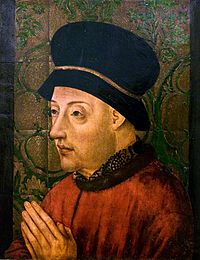













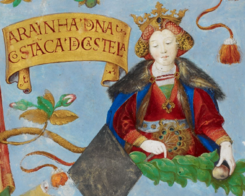











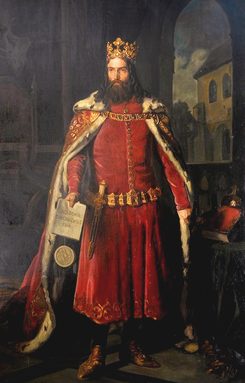
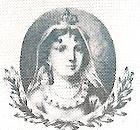








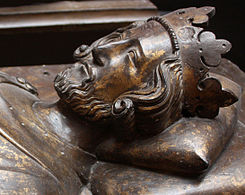

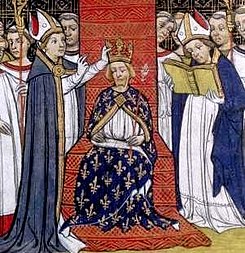

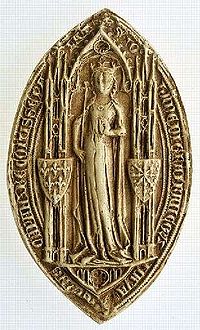

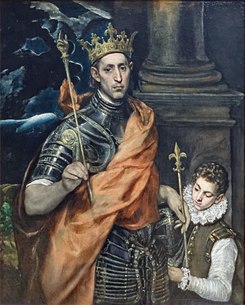


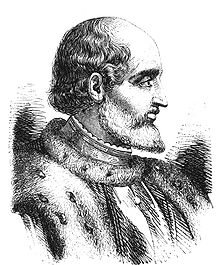
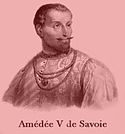


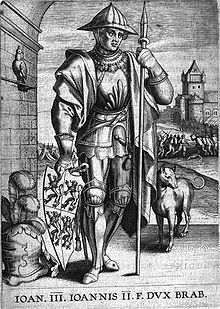




No hay comentarios:
Publicar un comentario